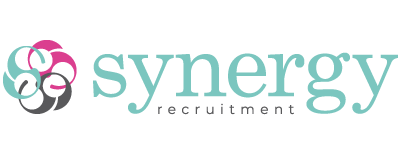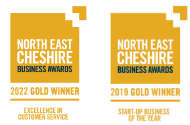How do I build a professional LinkedIn profile?
If you’re applying for jobs, networking, or even just thinking about your next career move, your LinkedIn profile is one of the most important tools you have. It’s your online CV, business card, and personal website all rolled into one – and it’s often the first-place recruiters and hiring managers will look before deciding whether to get in touch.
But what makes a great LinkedIn profile? One that actually opens doors?
Here’s a step-by-step guide to help you build a professional, effective LinkedIn presence that clearly communicates who you are and what you offer.
1. Choose a clear, professional profile photo
First impressions matter. Your LinkedIn profile photo is the first thing people see — and profiles with photos receive up to 21 times more profile views and 36 times more messages.
What works:
- A recent, high-resolution headshot
- Plain or uncluttered background
- Friendly expression, ideally smiling(!)
What to avoid:
- Selfies, party pics, group shots
- Outdated images that no longer reflect your current appearance
You don’t need a professional photographer, but you do need a photo that shows you as a professional.
2. Write a straightforward, searchable headline
Your headline sits right below your name and appears in search results. It’s one of the most important parts of your LinkedIn profile.
Your goal: Make it immediately obvious what you do.
Think of it this way – if someone had 2 seconds to look at your profile, would they understand what you offer?
Tip: Use clear job titles, industry keywords, and areas of expertise. Keep it simple, honest, and relevant to your target roles.
3. Use the about section to tell your story
This is your chance to provide a snapshot of your career, skills, and personality. It shouldn’t just be a list of buzzwords, it should tell a human story.
Break it into three parts:
- Who you are (your current role and expertise)
- What you’ve done (key achievements or specialisms)
- What you’re looking for (if you’re open to work)
Example:
I’m a Senior Marketing Manager with 8+ years of experience driving brand growth across B2B and B2C sectors. I’ve led multi-channel campaigns that delivered 30% year-on-year revenue increases and helped launch two award-winning product lines.
I’m passionate about combining creativity with data to solve real business problems. My strengths lie in campaign strategy, stakeholder engagement, and team leadership.
I’m now looking to bring my experience to a high-growth organisation where I can lead marketing strategy and continue delivering results.
Use short paragraphs. Be specific. Avoid jargon.
4. Add experience that highlights impact
The Experience section on your LinkedIn profile should go beyond listing job duties. Focus on achievements, not just responsibilities.
For each role:
- Start with a one-line summary of the job
- Add 3–5 bullet points describing key outcomes or projects
- Use action verbs (e.g., “Led,” “Improved,” “Delivered”)
- Quantify results where possible
Example:
Administrative Assistant | ABC Solutions Ltd (2021–2023)
- Provided high-level administrative support to a team of 8, including calendar management, travel booking, and meeting coordination
- Introduced a new filing system that reduced document retrieval time by 40%
- Handled client communication and scheduling, improving response times and customer satisfaction
- Created and maintained internal reports and spreadsheets using Excel, improving data accuracy and access
Tip: You can also add media, like documents, presentations, or links, to showcase templates, reports, or tools you’ve built.
5. Highlight key skills that match your goals
LinkedIn allows you to add up to 50 skills and the right ones improve your visibility in recruiter searches.
Start by adding 10–15 skills that are most relevant to the jobs you want. These can be a mix of:
- Technical skills (e.g., Excel, Adobe Creative Suite, Sage)
- Industry knowledge (e.g., employee relations, performance marketing)
- Soft skills (e.g., communication, leadership)
Tip: Prioritise skills that are commonly listed in job descriptions you’re interested in.
Encourage endorsements from colleagues – especially for your top 3 skills, which appear first.
6. Request recommendations
Recommendations act like mini-references. They add social proof and credibility to your LinkedIn profile.
Who to ask:
- Managers or supervisors
- Colleagues or peers
- Clients or business partners
Reach out with a short message explaining why you’re asking and offering to return the favour.
7. Customise your URL for a clean finish
By default, LinkedIn gives you a long, messy profile URL. You can change this to something clean and professional, like:
linkedin.com/in/janesmith
To edit: Go to your profile > click “Edit public profile & URL” on the right > click the pencil icon.
Include this new URL on your CV, email signature, or online portfolio.
8. Engage, don’t just exist
Your LinkedIn profile might be excellent but showing up on the platform matters too. Hiring managers and recruiters notice who is active.
You don’t need to post daily, but aim to:
- Share or comment on relevant articles
- Share thoughts on industry trends or personal insights
- Follow companies and influencers in your sector
It helps keep you visible and demonstrates that you’re invested in your field.
Final thought: clarity first – but don’t be afraid to add personality
The best LinkedIn profiles strike a balance. They make it easy for someone to understand what you do but they also show a bit of who you are.
Yes, clarity matters. Especially in your headline, job titles, and descriptions. But creativity has its place too. It can come through in how you tell your story.
People hire people. And a profile that’s both professional and human is more likely to get noticed and remembered.
Follow our LinkedIn page to keep up to date with our vacancies and other job searching advice!





